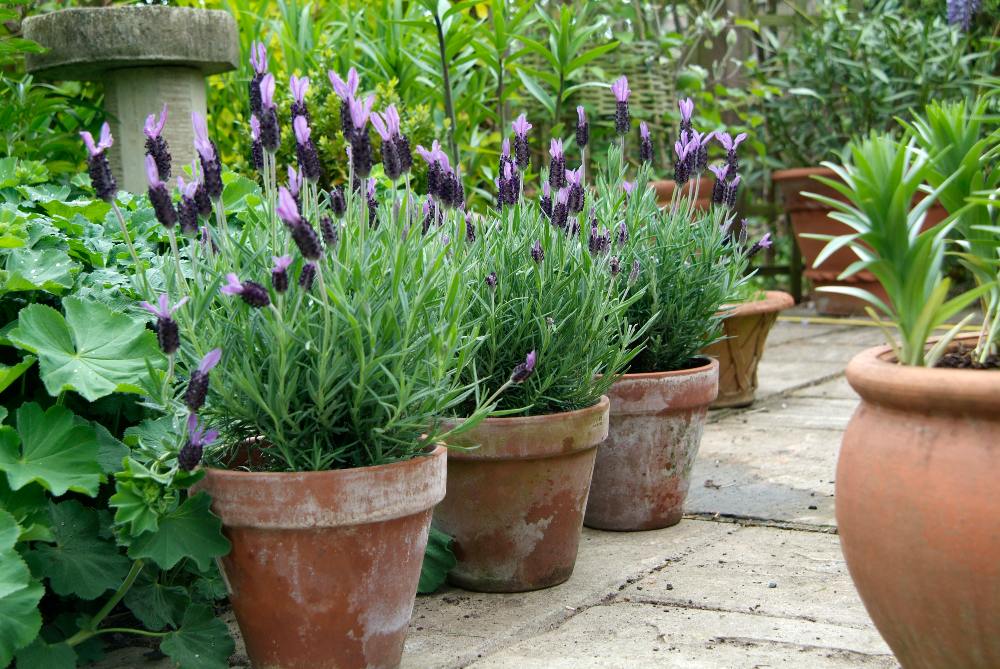How to combine pots, containers and plants to create your dream garden

Not every garden starts with a shovel in the ground. Sometimes you're living somewhere temporarily, aren't allowed to make any changes, or are stuck with a patch of concrete that won't let any plants take root. Whatever the reason, you don't have to settle for a bare, boring outdoor space. The solution? Gardening in pots and containers. With these, you can move, stack, and combine them—and create your own dream garden, wherever you live.
Read more below the advertisement
The foundation of container gardening begins with the right pots and containers. The size, materials, and shapes influence not only the ambiance of your garden but also the health of your plants.

Before you fill your garden with a ton of flowerpots , it's better to choose a few large ones rather than many small ones. In warm weather, large pots retain moisture better, so you'll need to water less often. Plus, your garden or balcony will look much more peaceful and stylish this way.

Not only the size of the pots is important, but also the material. A mix of earthenware, metal, wood, and plastic creates a playful effect, but don't overdo it. Choose one material (like stone) or color (e.g., earth tones) to use as a common thread throughout your garden. This creates a sense of calm. You can then add other materials and colors (in moderation). The same goes for shapes: round, square, and oblong pots work well together, as long as they complement each other in color or material.
Rule of thumb: Always group pots in odd numbers – groups of three work best for a natural look.

Whether you have a garden, a balcony, or a roof terrace, a beautifully filled pot or container is always welcome. This way, you can garden even without a garden, or make the most of every corner of your patio. In this special issue of Gardeners' World, we present 100 ideas for pots and containers for every season and every situation. From prolific bloomers to reliable perennials, and even fruits and vegetables.
- How to choose the right plants
- The best care tips
- Colour and atmosphere all year round

Now that you've chosen your pots, it's time for the fun part: filling them with plants. By cleverly varying the planting and changing it with the seasons, you can transform your garden into a true dream garden all year round.

The first question, of course, is which plants are suitable for potting. The answer? Almost anything – as long as the pot is large enough and you can provide the right soil and care.


What applies to the pots also applies to the plants. Start with one base color in your plant selection, for example, plants with white, purple , or pink flowers . Then add plants in matching shades. Or choose complementary colors (such as blue with orange flowers ) to create more depth and contrast. Also consider the color of the pots themselves: terracotta, anthracite, or glazed ceramic all contribute to the ambiance.

Container gardening starts with thinking in layers . Place tall pots or climbing plants at the back, medium-sized plants in the middle, and low-growing ones at the front. Don't forget hanging plants either. By placing plants at different levels—for example, with a plant trellis, wall hangings, or a raised bed—you create a sense of depth. This layering gives a spacious feel to your patio or small garden.


Fill pots according to the "thriller, filler, spiller" principle. Place a focal point—like the Canna shown here—in the center (thriller), fill the space with plants that complement the greenery (fillers), and let hanging plants cascade over the edge (spillers).










%3Aformat(jpeg)%3Abackground_color(fff)%2Fhttps%253A%252F%252Fwww.metronieuws.nl%252Fwp-content%252Fuploads%252F2025%252F08%252Fwandelen-the-north.jpeg&w=3840&q=100)
%3Aformat(jpeg)%3Abackground_color(fff)%2Fhttps%253A%252F%252Fwww.metronieuws.nl%252Fwp-content%252Fuploads%252F2025%252F08%252FANP-314935010.jpg&w=3840&q=100)

